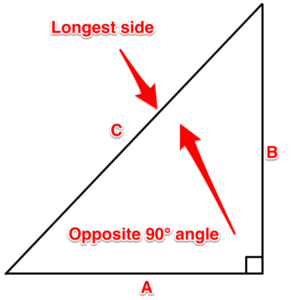Trigonometry
Pythagoras
Who is this Pythagoras and why does he matter?
Pythagoras was a Greek philosopher who lived around 500 BC. He is credited as being a philosopher and mathematician. Much of what we know of Pythagoras is from writings that were copied down hundreds of years after his death, so the validity of what we do know is questionable. He is credited with Pythagoras’ theorem when actually it has been proven that Babylonians and Indians were using variations of it for hundreds of years before he even came along. You can read more about Pythagoras in this article.
Thanks for the history lesson, but get on with it!
The Pythagorean theorem, also known as Pythagoras’ theorem, is a relation in Euclidean geometry among the three sides of a right triangle. ‘It states that the square of the hypotenuse (the side opposite the right angle) is equal to the sum of the squares of the other two sides.
Huh?
It’s not as bad as it seems. Basically, the Pythagoras’ theorem says that you can figure out any side of a right triangle as long as you have the other two sides, using the equation:
Important Formula!
A2 + B2 = C2
When we look at the formula, there is one important thing to remember: C is always the longest side.
A and B can be swapped around, but when using this formula, C is always the longest side (which is also the side opposite the 90-degree angle).

Video!
This video walks through how to apply Pythagoras’ theorem on a right triangle.
Attributions
Pythagoras Theory. video by The Electric Academy is under a Creative Commons Attribution Licence.

